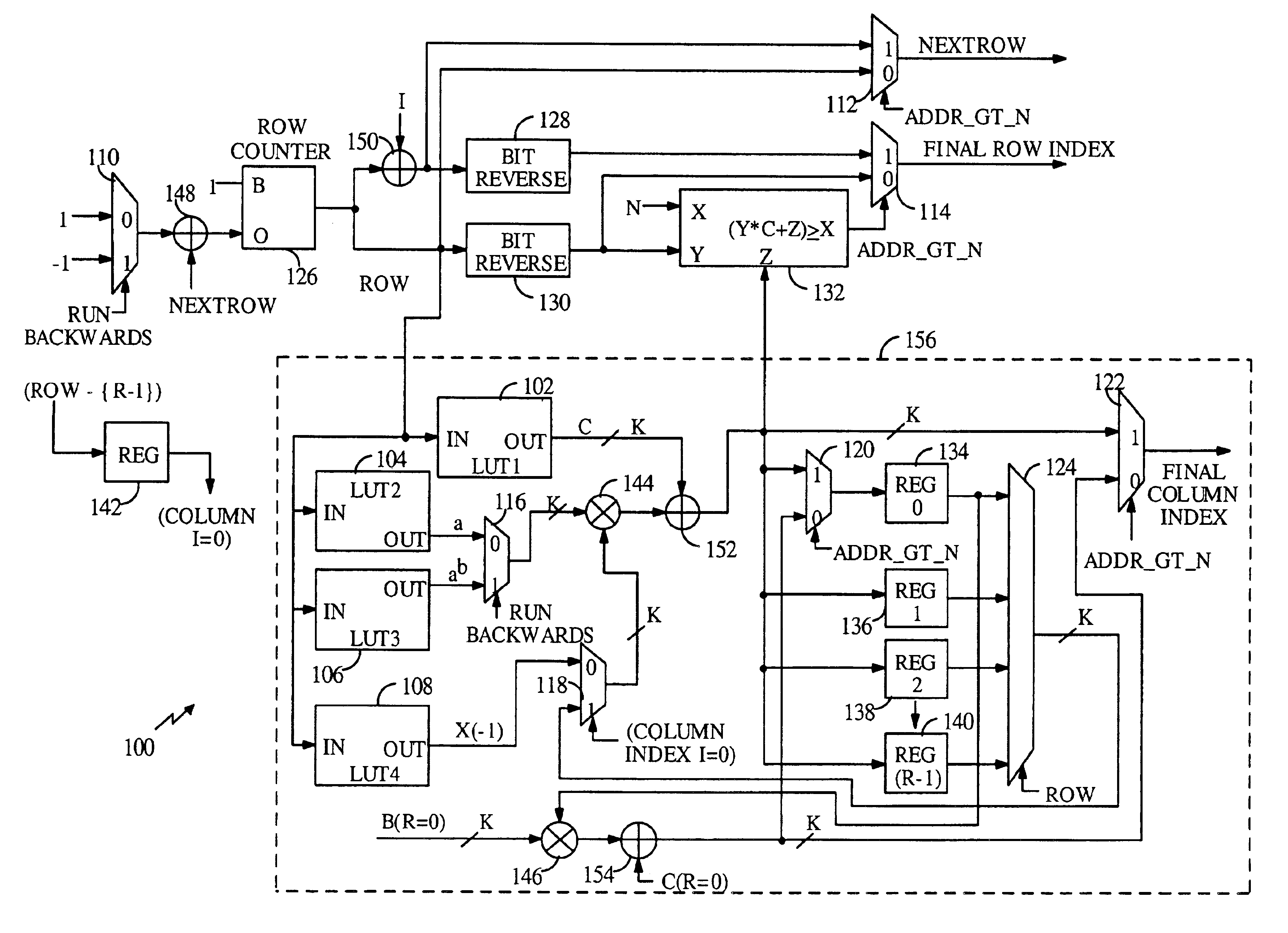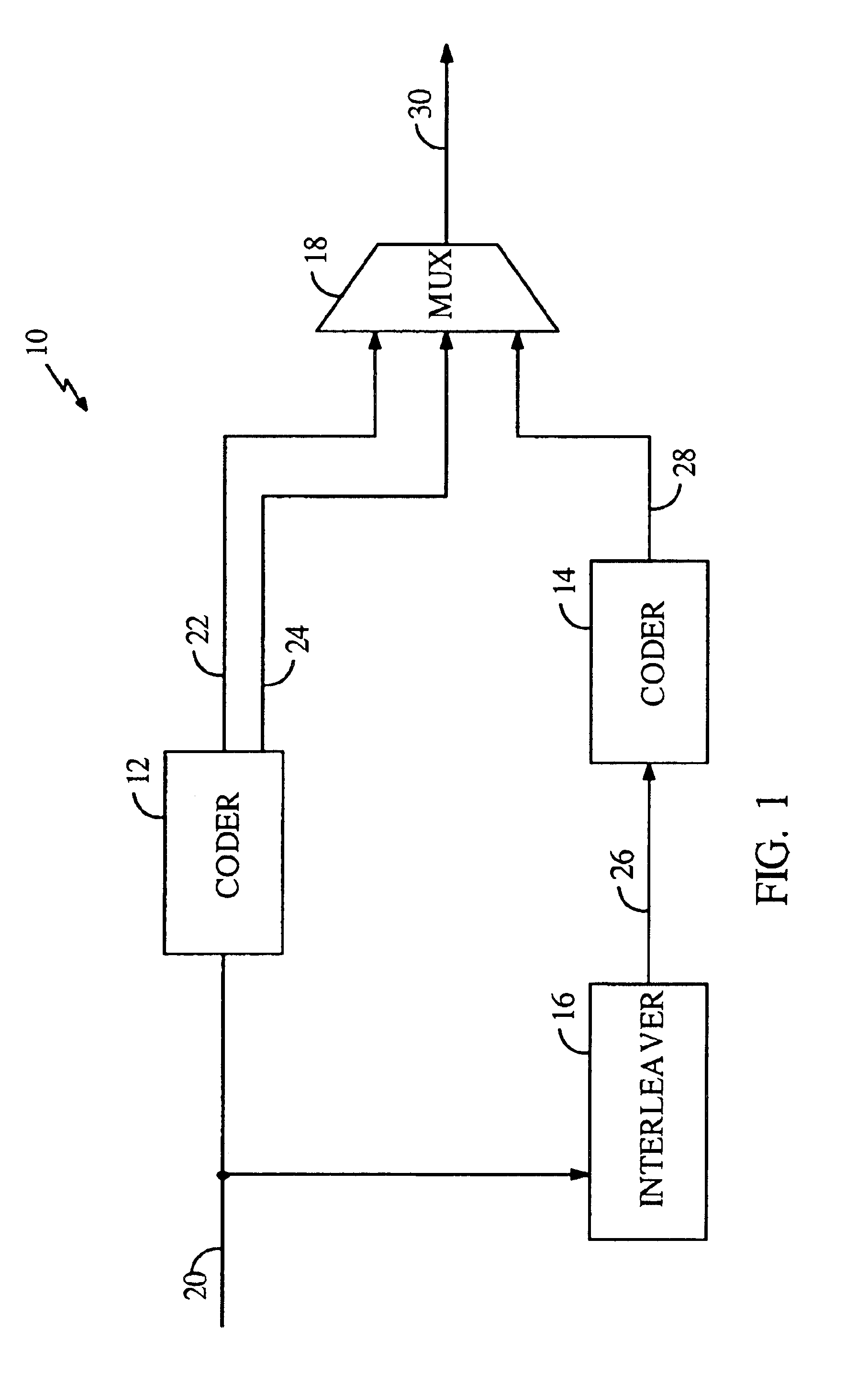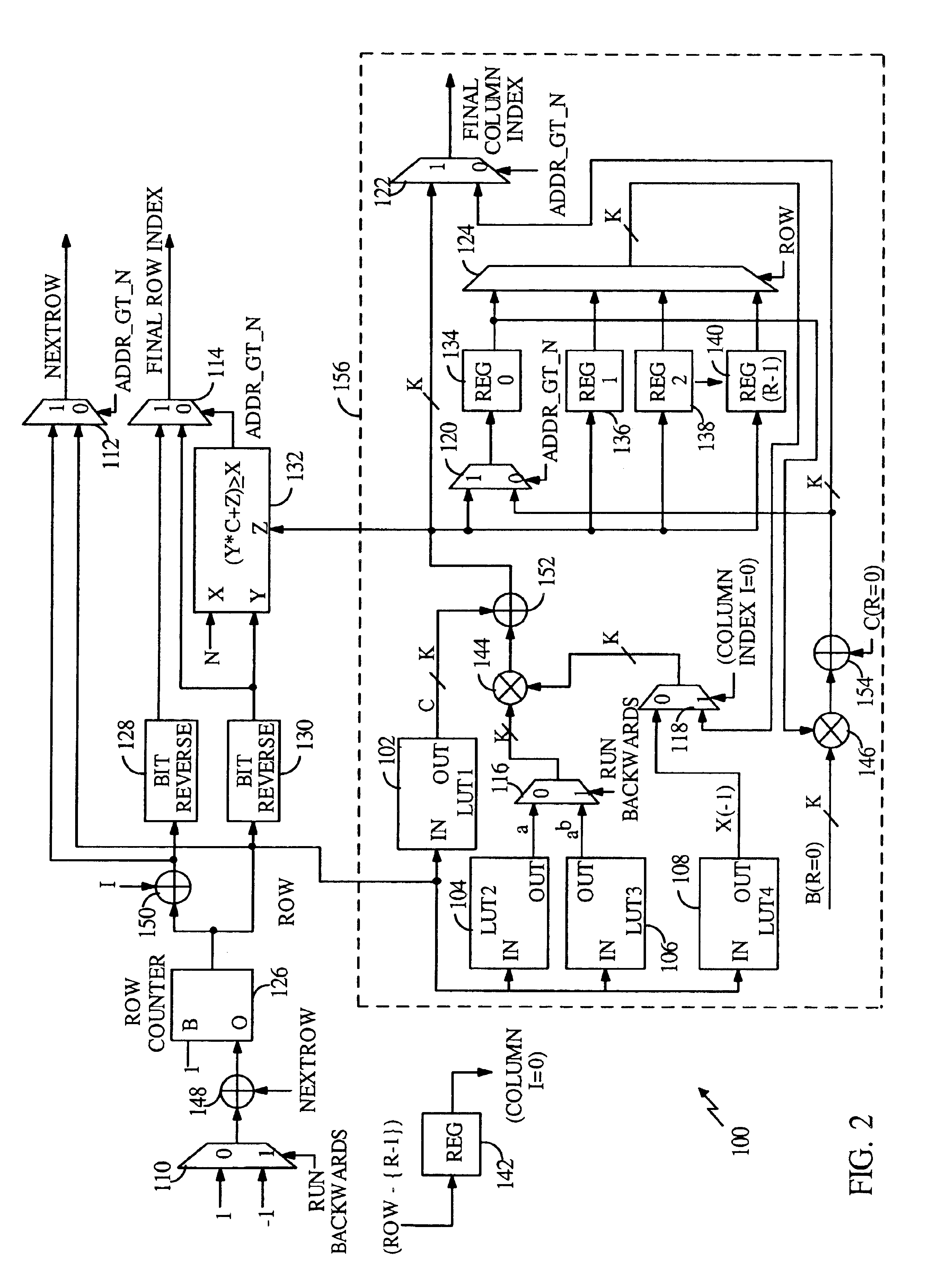Random-access multi-directional CDMA2000 turbo code interleaver
a multi-directional, random access technology, applied in the field of communication systems, can solve the problems of inability to request retransmission, inability to introduce errors into transmitted data, and inherently prone to interference in digital data transmission
- Summary
- Abstract
- Description
- Claims
- Application Information
AI Technical Summary
Benefits of technology
Problems solved by technology
Method used
Image
Examples
Embodiment Construction
In accordance with one embodiment, as illustrated in FIG. 1, a parallel concatenated turbo encoder 10, or turbo coder 10, includes first and second coders 12, 14, an interleaver 16, and a multiplexer 18. The first coder 12 and the interleaver 16 are configured to receive encoder input data 20, which is typically user information or control data. The first coder 12 outputs systematic symbols 22, which are typically a copy of the original input bits 20, and parity symbols 24. The second coder 14 is configured to receive an interleaved output 26 of the interleaver 16 and to output a second set of parity symbols 28. The systematic symbols (not shown) generated by the second coder 14 are suppressed, and the remaining respective outputs 22, 24, 28 of the first and second coders 12, 14 are multiplexed by the multiplexer 18 into an output data stream 30.
Additional coder and interleaver pairs may be added in parallel to reduce the coding rate, thereby providing enhanced forward error correct...
PUM
 Login to View More
Login to View More Abstract
Description
Claims
Application Information
 Login to View More
Login to View More - R&D
- Intellectual Property
- Life Sciences
- Materials
- Tech Scout
- Unparalleled Data Quality
- Higher Quality Content
- 60% Fewer Hallucinations
Browse by: Latest US Patents, China's latest patents, Technical Efficacy Thesaurus, Application Domain, Technology Topic, Popular Technical Reports.
© 2025 PatSnap. All rights reserved.Legal|Privacy policy|Modern Slavery Act Transparency Statement|Sitemap|About US| Contact US: help@patsnap.com



